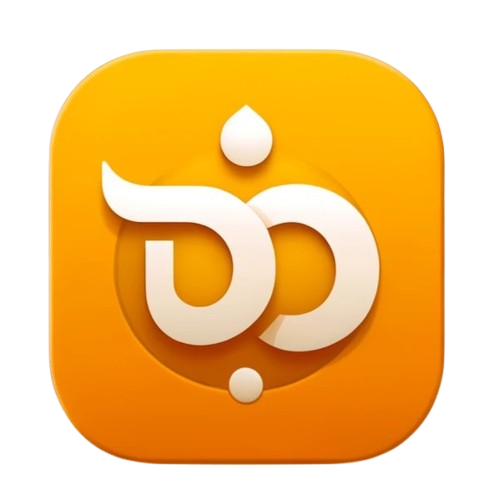Faguwa (Holi) 2023, Bexley London.
[Deepak] Bala Prasain
Holi is one of the most popular and widely celebrated festivals in Hinduism. It is also known as the "Festival of Colors" or the "Festival of Love". Holi is celebrated on the full moon day (Purnima) of the Hindu month of Phalguna, which usually falls in February or March.
There are several legends associated with the celebration of Holi, and the exact reason for celebrating the festival may vary depending on the region and tradition. Here are a few common explanations:
The legend of Prahlada and Hiranyakashipu: In Hindu mythology, Prahlada was a devotee of Lord Vishnu, and his father Hiranyakashipu was an evil king who despised Vishnu. Hiranyakashipu tried to kill Prahlada many times but failed each time. Finally, with the help of his sister Holika, Hiranyakashipu tried to burn Prahlada alive, but Holika was burned instead, and Prahlada was saved by Vishnu. This story symbolizes the victory of good over evil, and the burning of Holika is celebrated on the night before Holi as Holika Dahan.
The legend of Radha and Krishna: According to Hindu mythology, Lord Krishna used to play Holi with his friends and loved ones in his hometown of Vrindavan. He is believed to have applied colors to Radha and other gopis (cowherd girls), and the tradition of playing with colors on Holi is said to have originated from this.
The arrival of spring: Holi is also a celebration of the arrival of spring and the end of winter. It is a time to enjoy the beautiful colors of nature and the vibrant energy that comes with the changing season.
Overall, Holi is a time for people to come together, forget their differences, and celebrate with joy and love. It is a day to forgive and forget, and to spread happiness and positivity to all.
[Deepak] Bala Prasain
Holi is one of the most popular and widely celebrated festivals in Hinduism. It is also known as the "Festival of Colors" or the "Festival of Love". Holi is celebrated on the full moon day (Purnima) of the Hindu month of Phalguna, which usually falls in February or March.
There are several legends associated with the celebration of Holi, and the exact reason for celebrating the festival may vary depending on the region and tradition. Here are a few common explanations:
The legend of Prahlada and Hiranyakashipu: In Hindu mythology, Prahlada was a devotee of Lord Vishnu, and his father Hiranyakashipu was an evil king who despised Vishnu. Hiranyakashipu tried to kill Prahlada many times but failed each time. Finally, with the help of his sister Holika, Hiranyakashipu tried to burn Prahlada alive, but Holika was burned instead, and Prahlada was saved by Vishnu. This story symbolizes the victory of good over evil, and the burning of Holika is celebrated on the night before Holi as Holika Dahan.
The legend of Radha and Krishna: According to Hindu mythology, Lord Krishna used to play Holi with his friends and loved ones in his hometown of Vrindavan. He is believed to have applied colors to Radha and other gopis (cowherd girls), and the tradition of playing with colors on Holi is said to have originated from this.
The arrival of spring: Holi is also a celebration of the arrival of spring and the end of winter. It is a time to enjoy the beautiful colors of nature and the vibrant energy that comes with the changing season.
Overall, Holi is a time for people to come together, forget their differences, and celebrate with joy and love. It is a day to forgive and forget, and to spread happiness and positivity to all.
Faguwa (Holi) 2023, Bexley London.
[Deepak] [PrasainBM]
Holi is one of the most popular and widely celebrated festivals in Hinduism. It is also known as the "Festival of Colors" or the "Festival of Love". Holi is celebrated on the full moon day (Purnima) of the Hindu month of Phalguna, which usually falls in February or March.
There are several legends associated with the celebration of Holi, and the exact reason for celebrating the festival may vary depending on the region and tradition. Here are a few common explanations:
The legend of Prahlada and Hiranyakashipu: In Hindu mythology, Prahlada was a devotee of Lord Vishnu, and his father Hiranyakashipu was an evil king who despised Vishnu. Hiranyakashipu tried to kill Prahlada many times but failed each time. Finally, with the help of his sister Holika, Hiranyakashipu tried to burn Prahlada alive, but Holika was burned instead, and Prahlada was saved by Vishnu. This story symbolizes the victory of good over evil, and the burning of Holika is celebrated on the night before Holi as Holika Dahan.
The legend of Radha and Krishna: According to Hindu mythology, Lord Krishna used to play Holi with his friends and loved ones in his hometown of Vrindavan. He is believed to have applied colors to Radha and other gopis (cowherd girls), and the tradition of playing with colors on Holi is said to have originated from this.
The arrival of spring: Holi is also a celebration of the arrival of spring and the end of winter. It is a time to enjoy the beautiful colors of nature and the vibrant energy that comes with the changing season.
Overall, Holi is a time for people to come together, forget their differences, and celebrate with joy and love. It is a day to forgive and forget, and to spread happiness and positivity to all.
0 Commentaires
0 Parts
6KB Vue
0 Aperçu

